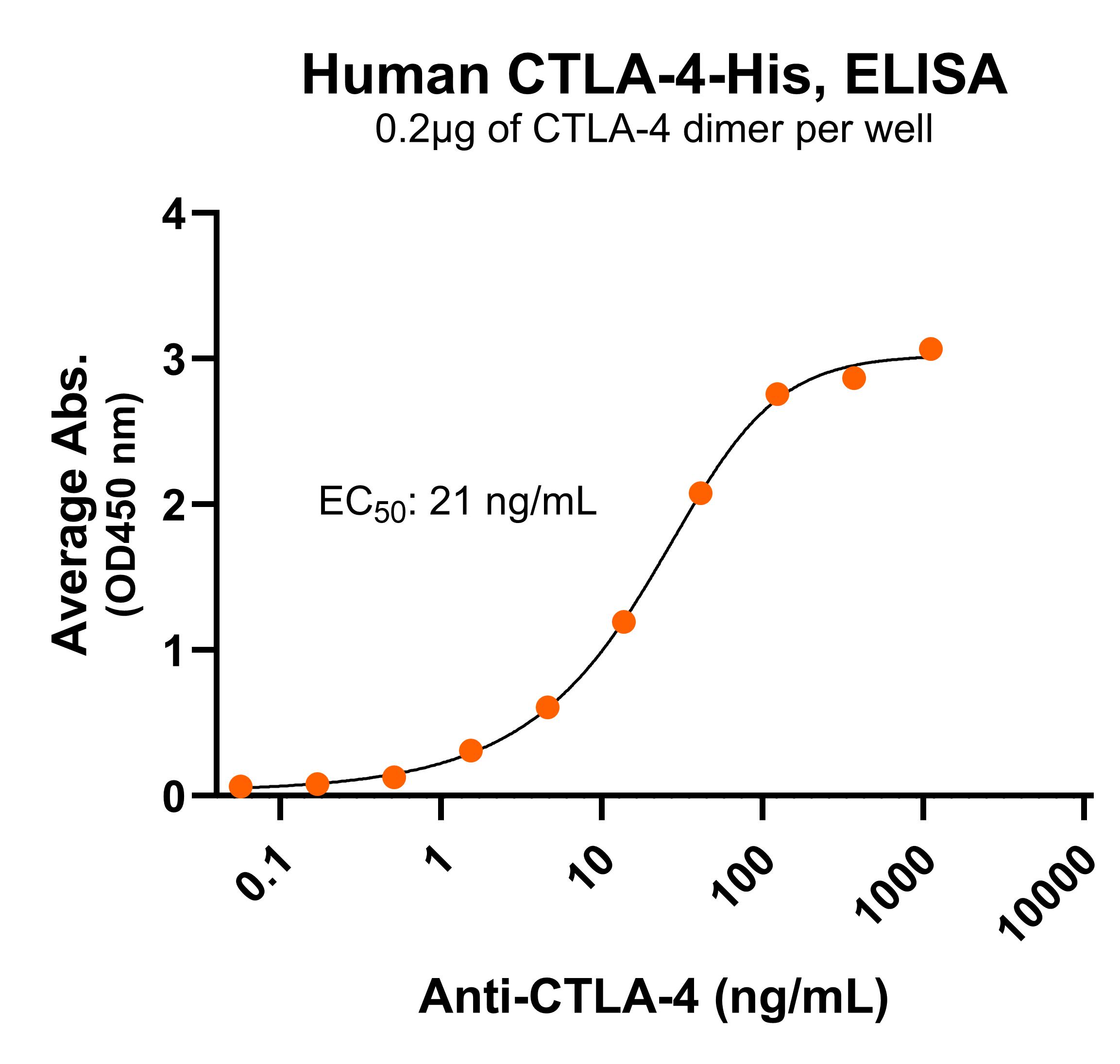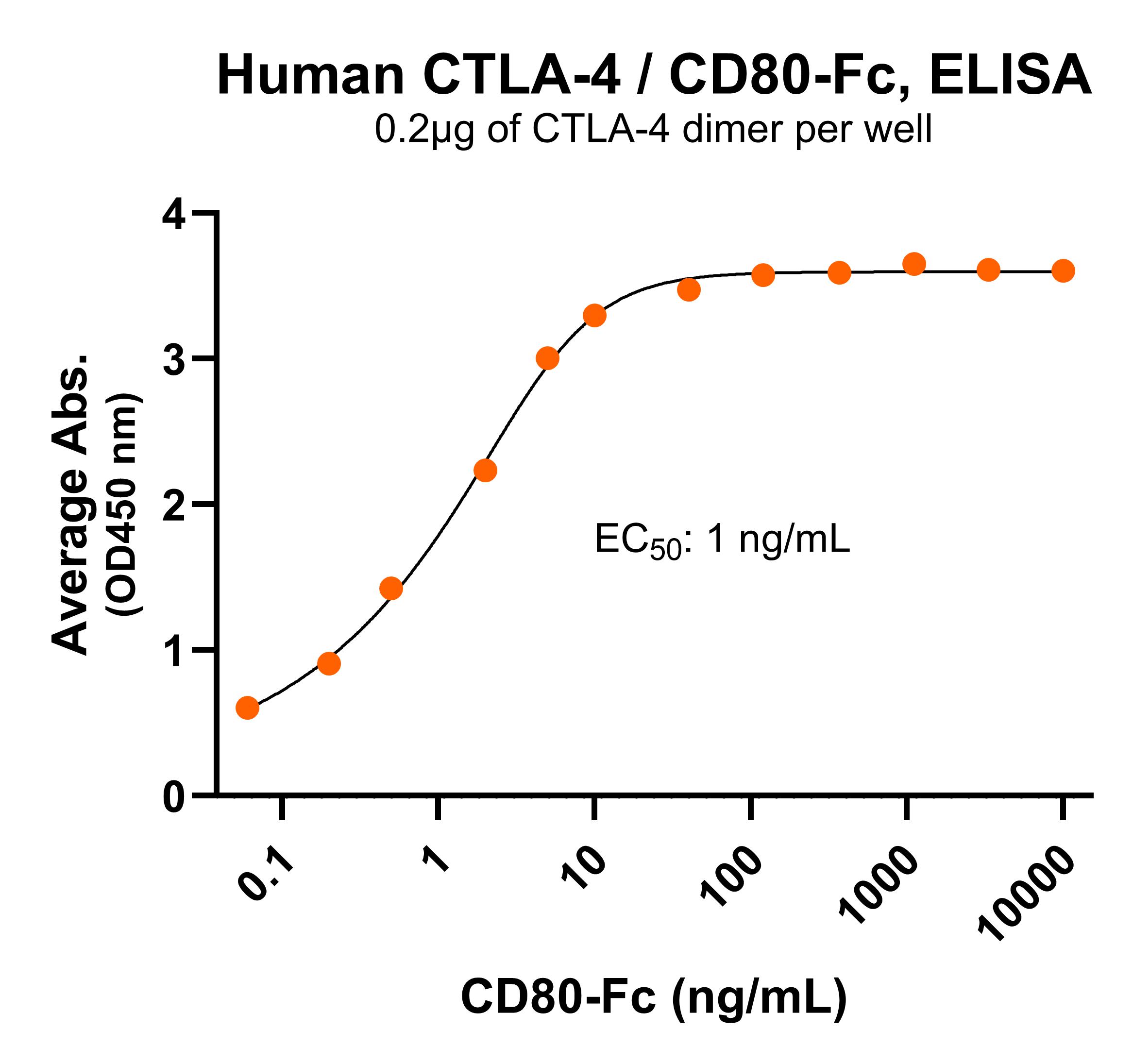 MW: Molecular Weight marker reduced condition
NR: CTLA-4 dimer under non-reducing condition
MW: Molecular Weight marker reduced condition
NR: CTLA-4 dimer under non-reducing condition Immobilized human CTLA-4 dimer protein
Immobilized human CTLA-4 dimer protein His Tag (Cat. No. CSP-24031) at 2 μg/mL (100 μL/well) can bind anti-human CTLA-4 monoclonal antibody with half maximal effective concentration (EC50) range of 10.5-42 ng/mL (QC tested).
His Tag (Cat. No. CSP-24031) at 2 μg/mL (100 μL/well) can bind anti-human CTLA-4 monoclonal antibody with half maximal effective concentration (EC50) range of 10.5-42 ng/mL (QC tested).For Research Use Only (RUO)